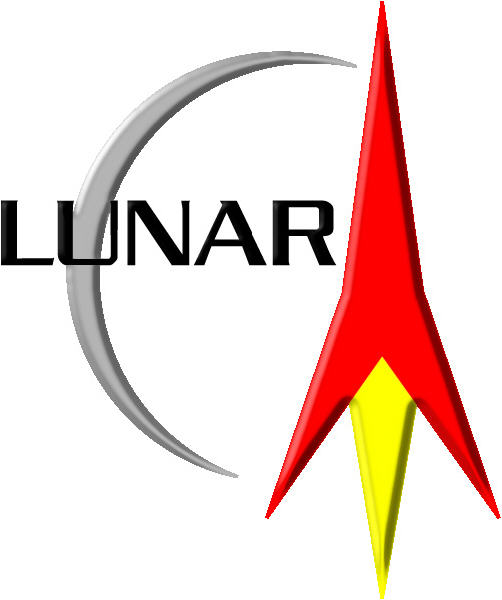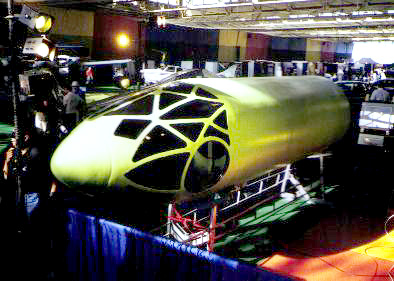 LUNAR’clips
2002
Volume 9, Number 5
LUNAR’clips
2002
Volume 9, Number 5
 LUNAR’clips
2002
Volume 9, Number 5
LUNAR’clips
2002
Volume 9, Number 5
Livermore Unit of the National Association of Rocketry September/October 2002
Copyright © 2002 by LUNAR, All rights reserved.
Cosmopolis XXI Suborbital Corporation

This is the only Russian team currently competing in the X PRIZE. They are headquartered in Moscow, Russia and the team is lead by Sergey Kostenko, the company's CEO.
C-XXI is a rocket powered spaceship which rides to a high altitude on a M55 altitude aircraft. Separation occurs using a patented separation system at an altitude of 17 kilometers. This private venture is being carried out in cooperation with Myasishchev Design Bureau (MDB), which specializes in high altitude aircraft and business jets. The spaceship is able to carry 3 people, 1 pilot and two paying passengers. The interior of the spaceship is pressurized, but the passengers are expected to wear pressure suites as a backup. Prototype flights are expected to operation in Russia, but then once the system is proven, C-XXI hopes to operate its flights around the world. C-XXI expects that its customers will need to train for about 1 week. The training will include high-altitude MiG flights, zero-gravity parabolic flight training, survival training and extensive work in simulators.

The flight will last less than 1 hour. The first 30-40 minutes are spent attached to the M55 aircraft getting to the required 17 kilometers altitude. Then the total rocket powered segment of the flight will be about 20 minutes. Take-off and landing will take place from the same location. Initial flights will be conducted out of a Russian Airforce facility. The M55 aircraft will be modified by the addition to two 2000 Kg thrust solid rocket boosters. The aircraft takes off under normal kerosene powered jet engines. Once in flight the M55 ignites the SRB's at altitude to gain additional velocity and a positive angle of attack. At this point the single solid rocket motor, a 7,000 kilogram motor with an ISP of 290 seconds, will ignite and take the spacecraft to 100 kilometers altitude.

The spaceship has a reaction control system (cold gas) for attitude control while in space. The spaceship utilizes heat-resistant shuttle tiles for its thermal control system during reentry. The spaceship has no propulsion during the landing phase and returns to its takeoff site as a glider. Sergey Kostenko's motivation in founding C-XXI is specifically to open the space tourism market utilizing the talent and available technology in Russia. Kostenko has said, "We are making excellent progress, currently building a full-scale prototype. We hope to win the X PRIZE and begin worldwide operations."
DA VINCI PROJECT

The da Vinci Project plans to launch its spacecraft from the world's largest hot air balloon. The 2,500 kg (5,500 pound) rocket will be tethered 300 meters (1,000 feet) below the 25-story balloon and lifted over the course of an hour to an altitude of 40,000 feet. The 10,000 pound thrust, liquid oxygen, kerosene engines will fire the first stage and the rocket will fly an initial angular trajectory to clear the balloon. The spacecraft then will transition to vertical flight to its apogee of 120 km in space. The rocket will reach a maximum speed on both its ascent and re-entry of Mach 4, or 4,250 kph (2,650 mph). An innovative ballute will protect and stabilize the rocket on re-entry. A flyable parachute will be deployed at 10,000 feet and the rocket will descend under control, guided by GPS, to a predetermined landing zone.


All content is the responsibility of LUNAR.
If you have comments or suggestions regarding these web pages,
please contact the 
Copyright © 1992 - 2025 LUNAR